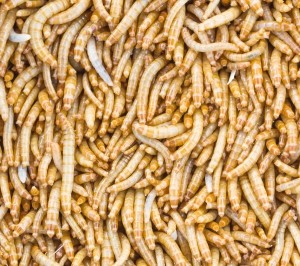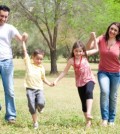Socialization

Social learning theory states that “we learn social behavior by observing and imitating and by being rewarded and punished.” Our significant others are our agents of socialization and are our role models, hopefully guiding us to appropriate behavior, however appropriate behavior is not always the case. We tend to avoid punishment and model those individuals who receive rewards for their behaviors. Albert Bandura, professor at Stanford University, gives us social learning theory, also called observational learning. (Image courtesy of Stoonn/FreeDigitalPhotos.net)
Bandura conducted the BOBO DOLL STUDY. Do a search online to find information on this study. What were the research methods? What individuals were studied? What were the findings of the study? What are the criticisms of the study? How has the study been repeated? What changes were made to the original study when it was repeated? Can you apply social learning theory to this study?
Bandura also has done extensive research on adolescent aggression. He discussed that adolescents have specific “aggressive models.” These models include their family (cycle of violence), the subculture (males and aggression, machismo for Latinos, and gangs), and the mass media (television violence). The idea is that there is not just one cause of violence (although many completely blame television), but a multitude of factors working together that cause violence in an individual. Finally, Bandura discussed that “positive verbal reinforcements” should be used to discourage violence behaviors.
GENDER SOCIALIZATION
How does social learning theory apply to gender socialization? Who are our significant others that “properly” gender socialize us (or genderize us)?
The following is a poem that applies to social learning theory:
“Children Learn What They Live”
If a child lives with criticism
He learns to condemn
If a child lives with hostility
He learns to fight
If a child lives with ridicule
He learns to be shy
If a child lives with shame
He learns to feel guilty
If a child lives with tolerance
He learns to be patient
If a child lives with encouragement
He learns to confidence
If a child lives with praise
He learns to appreciate
If a child lives with fairness
He learns to justice
If a child lives with approval
He learns to like himself
If a child lives with acceptance and friendship
He learns to find love in the world
By Dorothy Law Nolte
PICA
Do any of you know what Pica is? We are going to define it and explain how it applies to social learning theory.
From the medical dictionary, under mental disorders, pica is defined as: “Perverted appetite of nonorganic origin in which there is persistent eating of non-nutritional substances. Typically, infants ingest paint, plaster, string, hair, or cloth. Older children may have access to animal droppings, sand, bugs, leaves, or pebbles. In the adult, eating of starch or clay-earth has been observed.” To simplify this we will define pica for our course as “eating non-food.”
Some examples:
1) Historically, pregnant women were found to crave starch (what they used to wash their clothes with). Also note that cravings in pregnant women can indicate a vitamin deficiency of some sort.
2) A woman pulled out strands of her hair, would wad it up in a ball, and eat it. She was taken to the hospital for stomach pain and they found a hairball in her stomach. Apparently, we cannot digest large amounts of hair!
3) The worst case was a severely mentally ill man who literally ate his own hand. Horrible, I know, but true. We will not be applying social learning theory to those who are mentally ill and have pica.
4) I knew a man, who will remain nameless, who would, at the end of his meal, tear up his paper napkin, roll the pieces in a ball, and eat them. Needless to say, going to nice restaurants with cloth napkins was ideal!
So, how does Pica apply to social learning theory? It is said that Pica is socially contagious. There are those who are severely mentally ill and have Pica, but those are few, and they do not apply to social learning theory. Most people learn what is acceptable (norms) from their significant others. Pica is NOT when a child eats dirt or mud and we, as good parents, do/say what? My son did this a few years ago…just took a handful of mud and put it in his mouth…I grabbed him, said, “yucky”, cleaned out his mouth, and told him “we don’t eat dirt or mud.” He learned, but not all children are taught this. Data has shown that 70% of the children who have Pica their mothers also have Pica. What has been found is that they are learning what is acceptable, in this case, to eat, from their significant other, their mother. If a child’s mother eats non-food the he or she is also likely to eat non-food. Why do you think the study yielded the results that it is between mother and child? Well, poverty also played a major role (variable). Those in poverty were more likely to have Pica. Think about it, if I am poor I have less to eat and there is a wider range of acceptable things to eat. Also, poverty causes stress and these parents may not focus on the “little stuff.” Also, if my mother has Pica (eats, for instance, cigarette butts) then if I eat chalk she is not shocked by it. Children who have Pica also have a variety of other problems, such as: bed wetting, behavioral and academic problems, and are easily distracted. These are also variables that are related to poverty. Note that education is the intervention…peers, teachers, and principals intervene and tell the child it is wrong.
Now can you apply social learning theory to Pica?
Now, can you apply the issue of CURSING to social learning theory? How do we learn appropriate and inappropriate language? And when and where it is acceptable? I am amazed by people who can turn on “the words” at a drop of a hat and then turn them off when grandma is around.
Can you apply social learning theory to your life?
Questions:
What are feral children? What are the effects of being a feral child? What are isolated children? What are the effects of being an isolated child? What were the long term effects of Genie’s socialization? What were the long term effects of Isabelle’s socialization? In the case of Oskar and Jack what contributes to their similarities and differences? Is it heredity or environment? What were the findings of the study by Skeels and Dye on institutionalized children? What are the steps in Cooley’s “Looking Glass Self?” What is Mead’s “Taking the Role of the Other?” What are significant others? Can you think of all of the significant others in your life and how they have affected you? How do our personalities develop? What is gender socialization? How are we taught gender appropriate behaviors? Who are our agents of socialization? What is resocialization? What is the most effective method of resocialization? Are we prisoners of our socialization?
About admin
Teaching Sociology is very enjoyable for me. Sociology is like a gateway to a plethora of knowledge and understanding. The subject material is directly applicable to real-world events and situations found in everyday life. The methods and concepts of sociology yield powerful insights into the social processes shaping the contemporary world. The ability to identify and understand these processes is valuable preparation for professional participation in an ever changing and complex society.Related Posts
Latest News
-
Sociology and the Pursuit of Social Justice: A Compelling Reason to Study It
Sociology is a fascinating field of study that delves into...
- Posted May 31, 2023
- 0
-
The Power of Sociology: Understanding the Importance of Social Structures
Sociology is the scientific study of society, social relationships, and...
- Posted May 31, 2023
- 0
-
FACT FINDING MISSIONS
Life is interleaved with contracts and agreements, the formal and...
- Posted August 10, 2018
- 0
-
The Many Churches of Enhancement
Throughout history religions formed around prophetic doctrines and absorbed people...
- Posted April 6, 2018
- 0
-
TAKE A SECOND TO CONSIDER THE SECOND
Remember that during the late 1700’s when the young US...
- Posted February 21, 2018
- 0
-
WHAT’S ON THE TABLE FOR IMMIGRATION
Deliberating in upcoming months will be a new proposal for...
- Posted February 12, 2018
- 0
-
Time-saving Tips from Your Instructor
Here are some helpful tips: Involve your family/friends. Let them...
- Posted October 19, 2016
- 0
-
Sociology and the Pursuit of Social Justice: A Compelling Reason to Study It
Sociology is a fascinating field of study that delves...
- May 31, 2023
- 0
-
The Power of Sociology: Understanding the Importance of Social Structures
Sociology is the scientific study of society, social relationships,...
- May 31, 2023
- 0
-
FACT FINDING MISSIONS
Life is interleaved with contracts and agreements, the formal...
- August 10, 2018
- 0
-
Successful Families
SUCCESSFUL FAMILIES Balancing Work and Family (dual-earner families) 1.Value...
- June 16, 2011
- 0
-
Sociology of Marriage
Types of “Good” Marriages: Romantic Marriage: passion and sex...
- June 16, 2011
- 0
Sociological Theory
-
Symbolic Interactionism
Symbolic interactionism focuses on how individuals communicate with one another, the basis...








